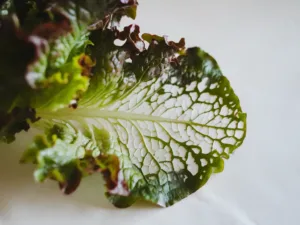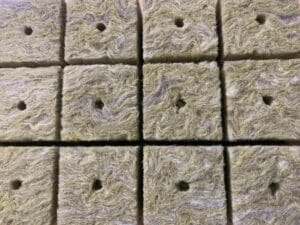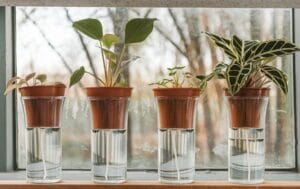Petunias are more than just pretty flowers. They bring vibrant pops of color to your hydroponic garden and attract all kinds of pollinators. Whether you’re looking for a decorative touch on your balcony or hoping to attract more butterflies and bees, petunias are an excellent choice. With their low-maintenance needs and the ability to thrive in hydroponics, they’re perfect for gardeners of any experience level. In this article, you’ll learn everything you need to get your petunias blooming in a hydroponic system – from choosing the right varieties to mastering their care.
Which Petunia Varieties Thrive Best in Hydroponics?
Petunias come in an incredible variety, each with its own unique features. For hydroponic growing, especially robust varieties that can handle a range of conditions and have extended blooming periods are recommended. Key traits when selecting varieties include flower shape, color, and height. Varieties that grow compactly and produce many blooms are particularly ideal. Here are some petunia varieties that thrive especially well in hydroponics:
- Petunia ‘Purple Wave’ – This variety creates a dense blanket of bright purple flowers with a cascading growth pattern, perfect for balconies or hanging baskets.
- Petunia ‘Cascadias Rim Magenta’ – With magenta flowers edged in white, this petunia is a standout. It grows compactly and is especially suited for decorative plantings.
- Petunia ‘Surfinia Sky Blue’ – With delicate, light blue blooms and a high blooming capacity, this variety is truly eye-catching. Its slightly trailing growth makes it ideal for hanging planters.
- Petunia ‘Multiflora’ – This hardy variety is particularly resistant to rain and well-suited for outdoor hydroponic systems. It produces many small, brightly colored flowers.
- Petunia ‘Grandiflora’ – For those who prefer a lush look, this variety is a great choice. Its large flowers are eye-catching and provide pollinators with easy access to nectar.
These varieties are not only visually stunning but also resilient and easy to care for – perfect for your hydroponic garden.
The Ideal Hydroponic System for Petunias
Petunias can thrive in most hydroponic systems, though some are particularly beneficial for these flowering plants. Systems that ensure consistent water supply and provide ample oxygen to the roots are ideal. Here are some of the best hydroponic systems for petunias:
- Nutrient Film Technique (NFT): Petunias benefit in this system from a constant supply of nutrient-rich water. The thin water film that flows over the roots ensures they’re well-nourished without becoming waterlogged.
- Deep Water Culture (DWC): In this system, petunia roots grow directly in water, benefiting from continuous oxygenation through aeration. The result: strong roots and abundant blooms.
- Ebb and Flow System: This method allows petunia roots to be periodically flooded with nutrients, then given time to absorb oxygen. This method is ideal for meeting root oxygen needs while optimizing nutrient supply.
Depending on your space and preferences, choose the system that best suits your needs. The key is ensuring petunias have a consistent supply of water and nutrients to flourish.
Growing Petunias in Hydroponics: Step-by-Step to a Blooming Garden
Growing petunias hydroponically starts with choosing the right seeds. Petunia seeds are tiny, so careful handling is essential during sowing. Start them in specialized growing cubes or germination trays, which provide optimal moisture conditions for germination and robust seedlings. Selecting high-quality seeds will also boost your success rate.
Once seeds are sown in the growing cubes, place them in a bright but not overly warm location. Petunia seeds germinate best at temperatures between 20 and 25 degrees Celsius. After about 10 to 14 days, seedlings will begin to emerge. Keep the seedlings moist with a spray bottle to prevent the substrate from drying out. When the young plants are around two to three centimeters tall and have their first true leaves, they can be moved into the hydroponic system.
A helpful tip: mixing the seeds lightly with fine sand can help distribute them more evenly when sowing. Patience is key – but don’t worry, once they’re established, petunias grow almost on their own!
The Best Substrate for Hydroponic Petunias
Choosing the right substrate for hydroponic petunias is crucial to their success. While traditional gardens often use soil, hydroponics requires a medium that retains moisture well while allowing air to reach the roots. The following substrates have proven effective for petunias:
- Rockwool: This material is highly popular because it retains water well and provides roots with ample oxygen. Petunia roots grow especially strong in Rockwool, resulting in lush blooms.
- Coconut Coir: A sustainable alternative, coconut coir also has excellent water retention. It’s lightweight, easy to handle, and provides a stable growing environment.
- Perlite: Though rarely used alone, Perlite is an excellent additive to other substrates, improving drainage and preventing root rot by reducing water logging.
When choosing a substrate, it’s essential that it retains enough moisture without waterlogging the roots. Petunias thrive in a well-aerated environment where their roots are adequately supplied with nutrients.
Temperature and Light: Keys to Blooming Success
For lush and long-lasting petunia blooms in hydroponics, providing the right temperature and light conditions is essential. Originating from warm regions, petunias prefer temperatures between 18 and 24 degrees Celsius. In this range, they thrive and produce numerous flowers. Avoid temperatures below 10 degrees, as they can slow growth and weaken the plants.
Light is another crucial factor for successful blooms. Petunias need plenty of light to grow strong and produce flowers. Ideally, they should receive 12 to 16 hours of light daily. If you’re growing them indoors, LED grow lights with a full spectrum are the best choice as they simulate sunlight and encourage both growth and flowering.
Ensure that your petunias have the right environment – with enough light and suitable temperatures, you’ll soon be rewarded with a breathtaking display of blooms.
pH and EC Values for Petunias: Balancing Nutrients
In hydroponics, achieving the right balance of pH and EC values is crucial for the well-being of your plants – and petunias are no exception. The pH level reflects the acidity or alkalinity of the nutrient solution, and for petunias, it should range between 5.5 and 6.5. If the pH is too low, nutrient uptake is blocked, and growth is inhibited. High pH levels, on the other hand, make it difficult for the plants to absorb essential minerals such as iron, resulting in nutrient deficiencies.
The EC value (Electrical Conductivity) indicates the concentration of nutrients in the solution. For petunias, the optimal EC value is between 1.6 and 2.2 mS/cm. A high EC value suggests an overly concentrated nutrient solution, which can burn the roots. A low EC indicates a nutrient deficiency, restricting plant growth. Regularly monitor these values with a pH and EC meter to ensure your petunias always receive optimal nutrition.
If you find that the pH or EC value is off, there are simple solutions: pH-Down or pH-Up products help restore balance, while you can adjust the EC value by adding nutrients or water.
Fertilizer and Nutrients for Abundant Blooms
Petunias are heavy feeders that require a steady supply of nutrients to reach their full blooming potential. In hydroponics, you can ensure your plants receive the correct amount of fertilizer to grow vigorously and produce abundant blooms.
A balanced bloom fertilizer is key for petunias. It should contain sufficient Nitrogen (N), Phosphorus (P), and Potassium (K) – the so-called NPK ratio. Nitrogen encourages leaf growth, while Phosphorus and Potassium are essential for flower production. For petunias, a typical recommendation would be a ratio of 10-30-20, with the high phosphorus content supporting bloom production.
Additionally, ensure that your fertilizer includes trace elements such as Iron, Magnesium, and Zinc. These micronutrients, though required in smaller amounts, are vital for plant health. Iron deficiency in particular can cause chlorosis in petunias, where the leaves turn yellow while the veins remain green.
Rotating nutrient solutions or using bloom enhancers can further stimulate flower growth. Be sure to refill the nutrients regularly and keep an eye on the values – your petunias will reward you with a colorful display of blooms.
Harvesting Blossoms: Petunias for Bouquets and Decor
One of the most delightful aspects of growing petunias hydroponically is the opportunity to harvest fresh, vibrant blooms. Whether you’re using them for bouquets or home decor, it’s essential to know the best timing and method for harvesting.
Petunia blossoms are particularly delicate, so harvest them early in the morning when they’re plump and well-hydrated. Choose blooms that are fully open but still look fresh. Use sharp scissors or a knife to cut the blossoms about one centimeter above the stem node.
To extend their vase life, place the blooms immediately in fresh, cool water. You can add a floral preservative mix to the water, which will extend the freshness of the blooms by several days. Whether arranged in vases or as single blooms in small dishes, petunias always make a lovely display.
Regular pruning and deadheading, removing spent flowers, will encourage new bloom production. This way, you’ll have fresh blooms to harvest over a long period – perfect for decorating your home or giving as gifts.
Petunia Diseases and Pests: Prevention and Control
While petunias do well in hydroponics, they can still be susceptible to certain diseases and pests that may hinder their growth. Fortunately, there are many methods to prevent or quickly address these issues.
Common Diseases:
- Gray Mold (Botrytis) – This fungal disease often occurs with high humidity, showing as gray, moldy patches on leaves and blooms. Ensure good air circulation and reduce excess moisture to prevent gray mold. Remove affected leaves and blooms immediately to stop the spread.
- Root Rot – This disease usually results from waterlogging or poor oxygenation of the roots. The roots start to rot, and the plant appears wilted and weak. Make sure your hydroponic system is well-aerated and regularly check the roots’ health.
Common Pests:
- Aphids – These tiny, sap-sucking insects often attack new shoots and leaves, leaving behind sticky residue. Natural predators like ladybugs or a mild soap spray can help control aphids.
- Spider Mites – These tiny pests cause tiny yellow spots on the leaves and create fine webs. Regular inspection and increasing humidity can help prevent spider mites. Neem oil sprays can also be effective for more severe infestations.
- Whiteflies – These small, flying insects lay eggs on the underside of leaves and weaken the plants by sucking sap. Sticky traps and biological insecticides like neem oil help keep these pests under control.
Regularly check your petunias for signs of diseases or pests. By taking preventive measures and acting quickly, you can avoid major problems and keep your plants healthy in the long run.
Special Tips for Caring for Petunias: Maximizing Blooms
For petunias to bloom especially lushly and for extended periods in hydroponics, there are a few extra care tips to consider. These little touches will not only make your plants beautiful but also keep them healthy.
- Regular Pruning: To extend the blooming period and encourage a fuller, bushier growth, it’s important to regularly remove spent blooms, a process known as “deadheading.” Trimming the tips of the shoots also encourages new flowers and results in even more blooms.
- Controlled Fertilizer Doses: Petunias are “bloom wonders” and love nutrients. Regular but controlled feeding is key. If you underfeed, bloom production may stagnate, while overfeeding can damage the roots. Adjusting the nutrient solution weekly helps maintain balance.
- Optimal Air Circulation: Ensure your petunias are in a well-ventilated space to prevent mold and fungal diseases. Particularly in closed hydroponic systems, humidity can rise quickly, increasing the risk of disease.
By following these tips, you’ll enjoy your petunias for a long time – they’ll keep blooming and transform your hydroponic garden into a sea of blossoms.
Petunias in Hydroponics – Vibrant Blossoms Year-Round
Petunias are a fantastic choice for any hydroponic gardener looking for a colorful, flower-rich plant. Whether you’re growing them to attract pollinators or simply for decoration, their blossoms will not disappoint. With the right variety selection, a suitable hydroponic system, and a little care, petunias will bloom year-round in full splendor. And the best part? In hydroponics, you can ensure they’re always optimally nourished without worrying about soil quality or weather conditions.
Now that you know all about growing and caring for petunias in hydroponics, nothing is stopping you from creating your own blooming oasis. Give it a try and be enchanted by the vibrant colors and lush blooms!







